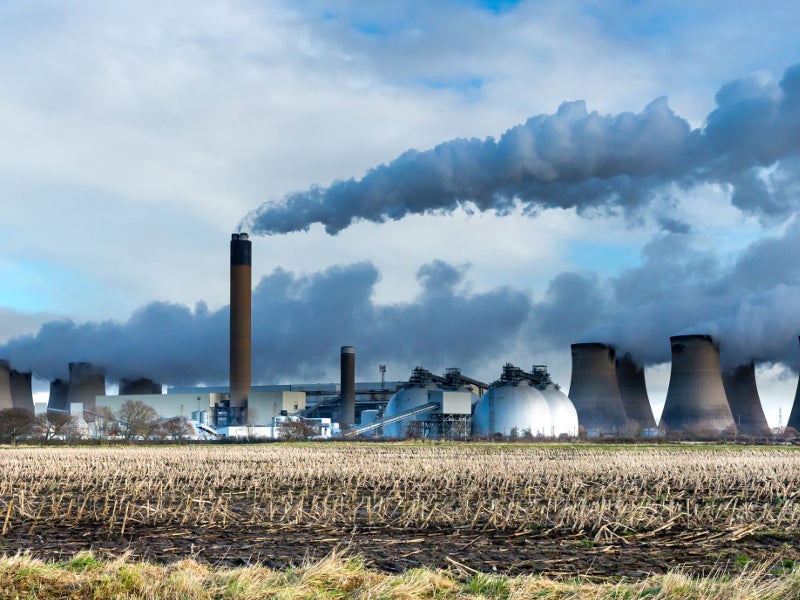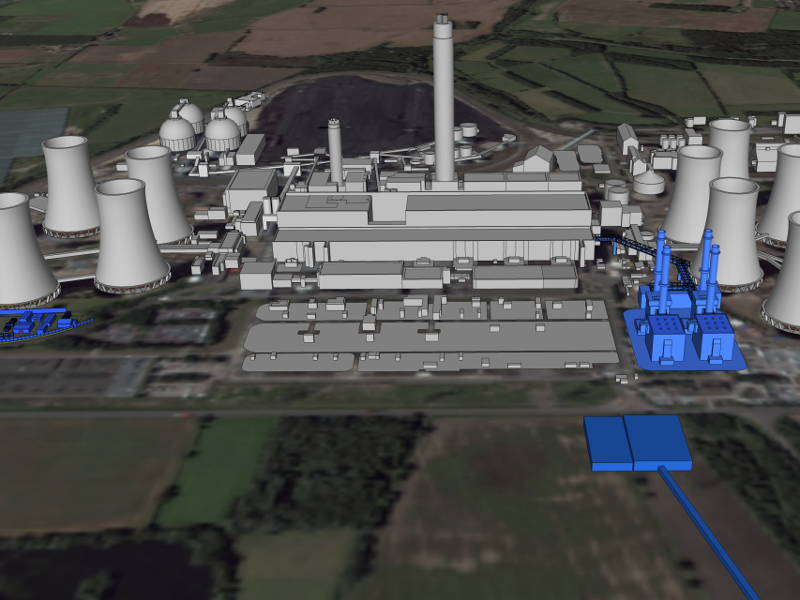The 3.9GW Drax power station located near Selby, North Yorkshire, is the biggest power plant in the UK. Owned and operated by Drax Power, a subsidiary of Drax Group, the plant generates approximately 18TWh of electricity a year, which accounts for 6% of the UK’s total electricity supply.
Although originally developed as a coal-fired plant that commenced operations in 1974, the plant witnessed the conversion of four of its total six units to run entirely on biomass between 2013 and 2018.
The four biomass-fired units of the plant provide 2.6GW, which constitutes approximately 12% of the UK’s total renewable power supply, while the two remaining coal-fired units, capable of generating a total of 1.3GW, are planned to be replaced with two 1.8GW gas-fired combined-cycle units by 2025.
Drax Group has announced to stop burning coal at the power station in March 2021.
Controversy over Drax expansion plan
The UK Government approved the expansion plan to add 3.6GW of gas-fired combined-cycle units at the Drax site in October 2019, despite a ruling from its planning inspectorate to block the plan over the perceived impact of gas turbines on climate change.
The government’s decision has triggered protests from environmental groups, who allege the proposed expansion will breach the UK’s climate protection goals. Certain groups have even demanded the government to scrap the £2.1m ($2.6m) green energy subsidies the power station gets a day for burning biomass.
Lawyers from the non-profit environmental conservation organisation ClientEarth initiated a high court challenge against the UK Government’s approval of the Drax coal-to-gas replacement project, in January 2020.
Drax power station history and development background
The Central Electricity Generating Board (CEGB) started building the Drax power station, after the discovery of the Selby coalfield in 1967.
The first 660MW unit of the plant was commissioned in 1974, followed by the commissioning of two more similar units in 1975.
The plant’s capacity was doubled with the commissioning of three more coal-fired units in 1986, making it the UK’s biggest power station. Units four, five, and six at Drax also remain the last coal-fired units to be built in the UK.
Ownership of the Drax power station was transferred from CEGB to National Power, after the electricity industry in England and Wales was privatised in 1990.
In 1999, National Power sold the power station to AES Corporation, a company based in the US, for £1.87 ($3bn), which went debt-ridden and abandoned Drax in 2003, leaving control to more than 50 creditor banks and financial institutions.
Refinancing for the power station was worked out finally and Drax Group was listed on the London Stock Exchange to become the owner of the power station in 2005.
Coal-to-biomass transition at Drax power plant
Drax has progressively switched to biomass off coal, in compliance with the Renewable Obligation Orders (ROO) issued by the UK Government from time to time.
Co-firing at all six units of the power station started by using the feed mix of 95% coal and 5% biomass in 2003, while direct injection facility to blow-crushed wood pellets from onsite mills into coal fuel lines was commissioned in 2005.
The first coal unit of the plant was converted to run only on biomass in 2013, while conversions of two more units were completed in 2014 and 2016, respectively.
The conversion of unit four was completed in August 2018, which also involved the construction of a new rail unloading building and storage silos.
The Drax power station currently produces approximately 75% of its electricity from wood pellets, which is classed as renewable energy.
Wood pellets supply for Drax
Wood pellets for the Drax power station are supplied by Drax Biomass, a subsidiary of Drax Group that operates three wood pellet manufacturing facilities in the US, including two in Louisiana and one in Louisiana.
Compressed wood pellets are shipped to the UK from a port facility in Baton Rouge, Louisiana, and delivered to the power station by train and stored in the biomass domes before being sent to the mills and then boilers.
Bioenergy carbon capture and storage initiative at Drax
Carbon dioxide (CO₂) was captured for the first time at the Drax power station in February 2019, as part of a pilot project using the bioenergy carbon capture and storage (BECCS) developed by C-Capture, a company based in Leeds, UK.
It is claimed to be the world’s first successful experiment of its kind to capture CO₂ from the combustion of an entire biomass feedstock.
Drax hopes the technology can be further scaled-up to capture 10,000 tonnes (t) of CO₂ a day from each of the four biomass units at the plant.
Drax coal-to-gas replacement project details
Drax announced plans to replace the remaining coal-fired units with gas turbines and to add up to 200MW of battery storage facility at the site in June 2017. It received a development consent order for the same from the UK authorities in October 2019.
The proposed coal-to-gas replacement project involves two 1,800MW combined-cycle generating units, with each unit comprising two 600MW gas turbines, a heat recovery steam generator, and a 600MW steam turbine.
A 3km-long new gas pipeline will be built to connect with the existing National Transmission System pipeline located to the east of the plant site.
The Drax expansion plan also involves a 100MW battery storage facility for each combined-cycle generating unit.
The first electricity from the gas-based project at Drax is expected in 2023.
Contractors involved
Siemens started on a three-year project to upgrade the turbines of the first three biomass units of the Drax power station in 2019, under a £40m ($52.6m) contract awarded in July 2018.
Siemens also completed the supply and installation of three intermediate pressure (IP) steam turbine modules at the power station in 2015, under a multi-million contract awarded in March 2013.
Doosan Babcock, an engineering company based in the UK, was awarded a four-year maintenance and outage services contract worth £60m ($78m) for the Drax power station in November 2018. The company was also responsible for the installation of emissions reduction technology on four boilers at the Drax power station, under a contract awarded in June 2015.
Capula, a subsidiary of Imtech, was contracted for the replacement of the main control system for one of the biomass-fired units of the plant in June 2018. It was also previously engaged for the control system and automation works for another biomass unit, biomass storage facility, as well as boiler distribution system at the Drax power station.
Alstom was contracted for the construction of the biomass processing facility at Drax in May 2008.
UK-based engineering contractor C Spencer supplied rail unloading equipment as well as biomass bulk storage and handling systems, under an £18m ($27m) contract awarded in April 2009.





